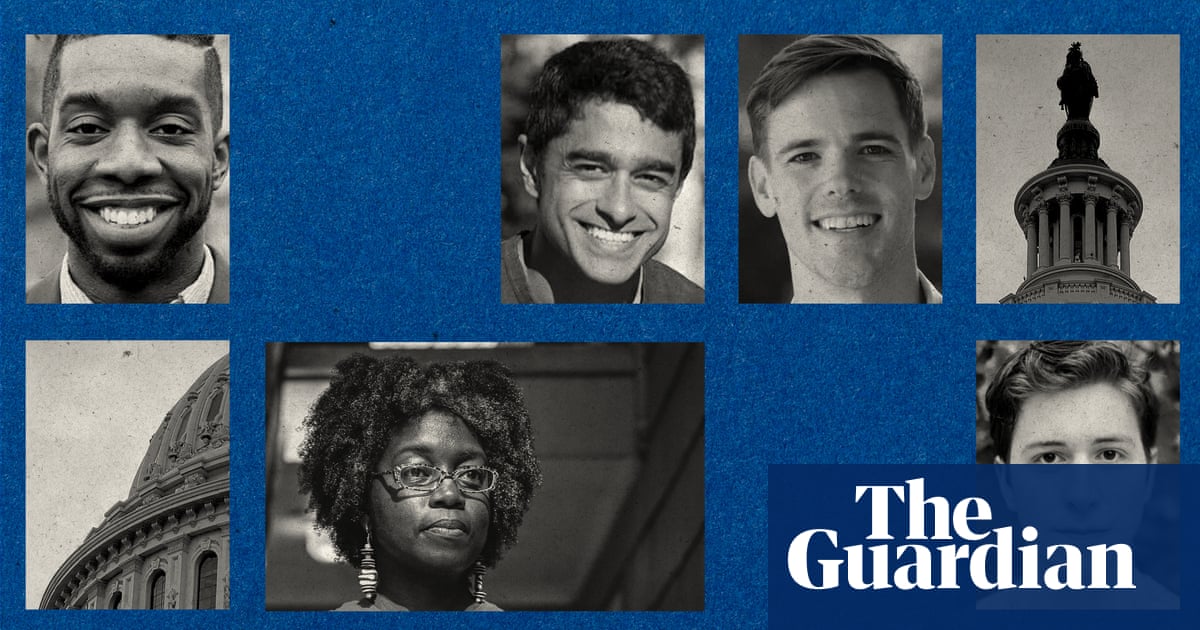The Rise of a New Generation: Young Candidates Challenge Democratic Establishment
As the 2024 election cycle looms, a palpable tension is brewing within the Democratic Party—a generational clash that could reshape its future. This year, fresh-faced candidates have emerged, challenging long-standing incumbents who have faced criticism for being out of touch with the evolving needs of their constituents. These newcomers bring not only youthful energy but also a sense of urgency that has been missing from the political discourse.
Discontent with Established Leadership
Liam Elkind, a 26-year-old New Yorker, found himself increasingly frustrated with the answers—or lack thereof—he received from his longtime congressman, Jerry Nadler. After a conversation where Nadler recommended donating to the Democratic Congressional Campaign Committee (DCCC) as a way to support the party, Elkind decided enough was enough. He launched a campaign against the 17-term incumbent. Elkind embodies a broader sentiment among many young people: a growing discontent with what they view as an out-of-touch Democratic leadership.
In Georgia, Everton Blair faced a similar situation. When questioning 80-year-old Congressman David Scott during a panel, Scott’s dismissive response only heightened Blair’s resolve to challenge the status quo. At just 34 years old, he aims to bring a fresh perspective to his district, demonstrating that this generational shift isn’t confined to just one state but is a national phenomenon.
Concerns About Age and Urgency
The Democratic Party is grappling with an aging leadership, as evidenced by the statistics reflecting the current Congress, which is one of the oldest in U.S. history. The average age is nearing 59, sparking questions about the ability of older lawmakers to relate to newer challenges. Recently, three members died in office, highlighting the urgent need for rejuvenation within the party.
Luke Bronin, another young challenger at 46, articulated this concern when he decided to run against 77-year-old Congressman John Larson. He emphasized that the job of a congressperson has dramatically evolved since Larson first arrived in 1999, urging the need for representatives who can meet the current demands of their constituents. This desire for change is echoed broadly across the political landscape.
A Clash of Political Tactics
While many of these aspiring leaders align ideologically with the incumbents they aim to unseat, the divide often lies not in policy but in how they perceive the urgency of action. The candidates frame their challenge as a struggle between “fighters” and “folders,” highlighting a belief that some Democratic leaders treat the Trump presidency as a phase rather than a fundamental crisis threatening American democracy.
Saikat Chakrabarti, a former chief of staff for Alexandria Ocasio-Cortez, articulates the frustration of grassroots activists who feel the party’s lack of aggression is putting its future at risk. His campaign against Nancy Pelosi’s long-held seat is emblematic of a broader push for change, reflecting a fundamental belief that the party needs leaders who are willing to fight for the core Democratic values.
Rising through Social Media Engagement
Social media has transformed the way these young candidates engage with voters. Many believe that an effective digital strategy can amplify their messages and resonate with the electorate, especially younger voters who favor a more direct and authentic interaction. Jake Rakov, a millennial candidate in California challenging Congressman Brad Sherman, has utilized these platforms to create a grassroots base, emphasizing that it is “offensive” for representatives to continue legislating as if the world hasn’t changed significantly in decades.
Candidates such as Katie Bansil, who is contesting Frank Pallone’s seat in New Jersey, have started leveraging their personal narratives through social platforms. Bansil’s perspective as an immigrant seeking new leadership speaks directly to her constituents, illustrating the evolving narrative around candidacy.
The Role of Activism
Organizational backing from youth-led activist groups, such as Leaders We Deserve, has surged, pledging support to candidates who challenge incumbents perceived as complacent or ineffective. This mobilization represents a recognition among younger Democrats that traditional avenues for influence—such as endorsements from established leaders—are no longer sufficient. They see primary challenges not merely as contests of candidate against candidate but as crucial battles for the party’s identity.
The Republican response to these upheavals indicates an appreciation for the discord among Democrats. Party representatives have characterized it as a fundamental struggle between the “socialists and the party dinosaurs,” thereby framing the internal conflict as advantageous for their efforts in forthcoming elections.
Emerging Candidates, Local Voices
As younger candidates gear up to face established politicians, their local roots often serve as a compelling narrative. Jasmine Clark, a 42-year-old Georgia state representative, has emphasized her intention to bring nuance and fresh energy to her congressional bid. Aiming to address misinformation rampant in political discourse, Clark believes that stagnation in Congress hampers progress and cultivates an uninspired electorate.
Everton Blair also taps into local empathy, discussing his upbringing in the district where Scott holds office. His focus on activating marginalized voices can serve as leverage against the longstanding representation that some constituents feel has let them down.
A Growing Movement
With young voices rising against elders in Congress, the 2024 elections will serve as a litmus test for the Democratic Party. Candidates like Elkind and Rakov articulate the urgent need for change, leveraging personal experiences to create relatable platforms. Meanwhile, the establishment’s responses will be critical in determining whether they can adapt to retain their voter base.
This generational struggle reflects broader societal shifts, and as midterm elections approach, both challengers and incumbents will be scrutinized for their vision of the future and whose voices they prioritize in shaping that narrative. The outcomes of these contests may set significant precedents regarding the longevity and adaptability of political leadership in an era characterized by rapid change.



